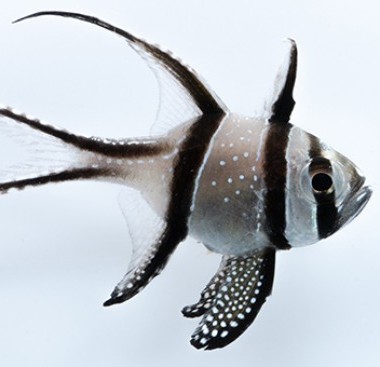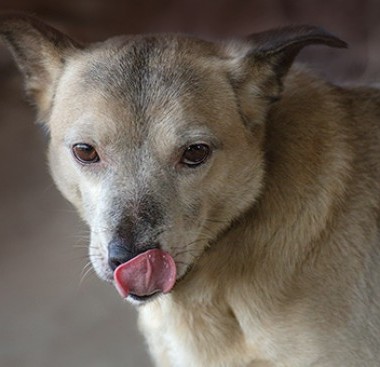HIKERS CAN NO LONGER BRING DOGS TO PARIA CANYON WILDERNESS PERMIT AREAS
New Policy Could Open The Door To More Dog Bans
By: Staff Date: 01/8/2012 Category: | Animal Legislation | Canine Issues | Wildlife Journal |
 ".prohibited...", ".not allowed.", ".forbidden.", ".access is denied...', ".no longer allowed."
".prohibited...", ".not allowed.", ".forbidden.", ".access is denied...', ".no longer allowed."
Effective on January 1, 2003, the US Bureau of Land Management closed portions of the Paria Canyon-Vermilion Cliffs Wilderness Area in Arizona and Utah to dogs. No longer can day-hikers and backpackers enjoy the companionship of their dogs in the permit areas of the Paria Canyon, including Buckskin Gulch, Wire Pass and the Coyote Buttes.
The BLM reports on its Internet web site that:
".impacts from dogs, such as harassment of other visitors and wildlife, noise, and waste have been increasing to the point that dogs will no longer be allowed after 31 December 2002."
Because BLM controls more public land than any other single federal agency,1 it has a huge impact on people with diverse animal interests if it adopts unreasonable animal-access or animal-use policies. Furthermore, the agency could be encouraged to take similar actions in other resource areas under its control if these restrictions go substantially unchallenged.
A Bit of Background
BLM has provided a wonderful description of the Paria Canyon-Vermilion Cliffs Wilderness on its web site:
"The 112,500-acre Paria Canyon-Vermilion Cliffs Wilderness lies approximately 10 miles west of Page, Arizona, in Coconino County, Arizona, and Kane County, Utah. Nationally known for its beauty, the Paria Canyon has towering walls streaked with desert varnish, huge red rock amphitheaters, sandstone arches, wooded terraces, and hanging gardens. The 3000-foot escarpment known as the Vermilion Cliffs dominates the remainder of the wilderness with its thick Navajo sandstone face, steep, boulder-strewn slopes, rugged arroyos and stark overall appearance. Some of the best slot canyon hiking opportunities on the Colorado Plateau are found here. Deer and desert bighorn sheep inhabit the area. The wilderness also provides opportunities for backpacking, photography, and solitude. In the northwest portion of the wilderness lies Coyote Buttes, an area of spectacular scenery displaying domes, aprons, fins, corridors, and a variety of small fragile rock sculptures carved in colorful swirling cross- bedded sandstone. The variety of colors and textures in the rock formations within the wilderness constantly change with variations in light and weather. This colorful sandstone area creates a feeling of wonder and amazement."2
Prior to the mid-1980s this BLM land area was quietly secluded and little used by the public. Livestock grazing occurred within the lower one-quarter of the canyon. In 1984, the Arizona Wilderness Act brought this area under the protection of the Wilderness Act of 1964 and the die was cast. The prophecy is self-fulfilling. "If you build it, they will come." Over the years, this area has seen a large increase in resource use.
The Issue
Until recently, BLM has been an animal-friendly organization. Unlike the National Park Service, BLM has never promulgated resource management policies that precluded people from enjoying the companionship of pets (especially dogs and horses) during visits to BLM land. Dogs and horses have always been welcome in the Paria Canyon.
Over the years, this area has become so popular that BLM has decided, in the interest of resource protection, to limit the number of overnight users to 20 per day. When Congress granted permission to charge for permits, BLM decided that dogs, like people, would have to pay for the privilege of visiting the wilderness. So, dogs were assessed the same rate as humans: $5 per day. The issue here, however, is not the permit system or the fees involved, but the tortured logic applied to the resource management policy concerning the presence of dogs.
In the summer of 1998, I contacted BLM to express my personal views on a number of aspects of management of the resource. Concerning dogs, I wrote:
"We would like to comment about dogs. We have not experienced any trouble with dogs in the Paria Canyon. Every dog we have encountered has been well mannered. We own a dog. Although we have never taken her on a backpacking trip, we would not want to be denied the opportunity and pleasure of hiking with one of our family members. This issue is a matter of proactive enforcement by the BLM. Sanction troublemakers and allow compliant users to freely enjoy the land and wilderness experience."3
On July 10, 1998, I received a long letter from Harry Barber, the BLM Resource Manager in Kanab. Concerning my comments on dogs, he wrote:
"The presence of dogs in the Paria Canyon-Vermilion Cliffs Wilderness is of special concern to a large segment of our visitors. According to a visitor survey conducted by NAU (Northern Arizona University-ed. note), when asked what they disliked about their canyon experience, the fourth leading complaint was the presence of other people's dogs. On the other hand, when asked what they like best about their canyon experience, the fourth leading response was that visitors could hike with their dogs. In order to try to respond to each side equitably, we decided to try something different instead of banning dogs altogether. We reasoned that dogs should be subject to the same standards as an adult person, with the exception that a dog would not be required to get a backcountry permit. In effect, dogs (or their owners) pay for the same privileges as any other user. This policy seems to have satisfactorily resolved the issue for most people."4
In July 1998 the BLM resource managers seemed satisfied that they had reached a reasonable accommodation to conflicting views on the presence of dogs within the resource area. The BLM Resource Manager himself made no reference to evidence, studies or objective observations concerning any adverse impact created on the resource by the presence of dogs. Instead, BLM concern was for the opinion of its customers, the resource users.
Horses
The BLM does not want you to hike with your dog because ".impacts from dogs, such as harassment of other visitors and wildlife, noise, and waste have been increasing to the point that dogs will no longer be allowed after 31 December 2002." But the BLM remains committed to allowing at least some access for equestrians. Horses will continue to be permitted in some areas that will be off-limits to dogs. Although hoofed stock are banned in the Coyote Buttes Special Management Area, recreational use of horses and packstock is still allowed in Paria Canyon according to the fact sheet on the BLM website:
Can I use a horse or other packstock for my private (non-commercial) trip? Yes, however it is not recommended. Portions of Paria Canyon are very rugged or contain quicksand. If you use horses or other packstock5, you must keep them in the shoreline terrace areas and not on the camping terraces. No horses or pack stock are allowed for commercial, guided trips.6
Having read that, I took pains on October 14, 2002, (my last Paria Canyon hike) to document horse manure deposits within 10 feet of a stream and in other areas as one indication that horses have a far greater impact on the land. Horses are noisier than dogs and eat canyon vegetation; their manure dumps are far larger than dog piles and attract flies and pollute at least as much as dog or human feces.
Harassment of Life
When you think about what one or two dogs could possibly do to harass wildlife, several things come to mind. The dog might bark or the dog might give chase. Chase scenarios are pretty limited though, because most dogs I have seen in the Paria Canyon were wearing pannier-type packs that would greatly limit any enthusiasm or agility for a chase. The dogs I have encountered in the Paria Canyon also have given the appearance and demeanor of being experienced hikers, just like their owners. There are exceptions to everything and no absolutes, but I have a difficult time imagining that backpacking dogs, trained to the discipline of the pack and trail, are running rogue in the Paria Canyon causing so much havoc among the users and wildlife as to warrant a total ban by the BLM.
The two prominent ungulates that reside in the Paria Canyon are deer and bighorn sheep. There are also antelope in this area, but they are more likely to be found outside the canyon. Within the lower Paria, the ungulate population seems to range in the lower one third of the canyon. They seldom roam in the narrows area for any length of time because there is no forage and the confining walls of the canyon are likely to make them feel threatened. There is ample evidence that the deer frequent the stream area, and it is possible to occasionally observe bighorn sheep tracks along the stream. The bighorn sheep population in the area of the Paria Canyon-Vermilion Cliffs Wilderness Area is the species of most concern to the BLM; its habitat is up and out of the stream area and high along the walls of the lower one-third of the canyon.
Peak times for hiking in the canyon are April-May and September-October. Peak breeding time for bighorn sheep is August; most lambs are born in January or February when the area is virtually devoid of visitors. The common sense conclusion from this information is that the bighorn population in the Paria Canyon is under the least influence and stress from humans (and their dog companions) when the rut is at its peak and when lambs are born.
The Arizona Game and Fish Department apparently sees nothing wrong with the health and status of the bighorn sheep population in and near the Paria Canyon-Vermilion Cliffs Wilderness Area. The bighorns are currently being harvested by hunters in properly controlled numbers. Predators implicated in sheep deaths are mountain lions, golden eagles, bobcats, and coyotes7. I cannot find any comments, warnings, concerns or studies from the Arizona Game and Fish Department that indicate that domestic dogs accompanying hikers through the Paria Canyon are harming or diminishing the bighorn population. 8
There is research that concludes that bighorn sheep have evolved in the presence of canine predators and react strongly to the presence of dogs by increased heart rate and flight. Bighorn sheep run when they see a dog. The studies also indicate that bighorn sheep have an equally strong heart rate increase and flight response when they see humans, land-based vehicles, helicopters, and even when they hear noise where there is no physical manifestation.
These studies were conducted on the bighorn sheep populations of specific areas in Southern California and Southern Arizona near Tucson and are considered applicable only to the sheep in those areas. None of them were conducted with the bighorn population in the Paria Canyon. Therefore, if our BLM Paria Canyon policy makers are relying on these studies, they are practicing questionable science.
In the worst case, "harassment of other visitors" might include an incident of a dog biting someone. If this has occurred it would be truly unfortunate and regrettable, especially if unprovoked; however, the person responsible for controlling the offending dog must be held accountable. An incident (or even several incidents) of dog bite would not be sufficient reason to extinguish the privileges of the many hundreds of responsible dog owners who enjoy the use of this resource. There have been much more serious injuries in the Paria Canyon that have been inflicted by the foolish actions of resource users or by the stealth of nature.
I am in the process of collecting information about the nature of "harassment of other visitors" from BLM; even though it is public information, the BLM wants to be paid to produce it and I am deciding what to ask for first.
Noise
Obviously, the reference to "noise" is barking.
How much barking from dogs in a 37-mile long canyon would have to occur before you can reach a conclusion that a dog's bark constitutes a sufficiently egregious act to warrant a ban on dogs and the subsequent punishment of all who would hike through this area in the company of a dog?
I have traversed this canyon eight times. I've seen and met many dogs during these hikes. I have yet to hear a dog bark in the canyon. Does that mean dogs have not barked in the Paria Canyon? No, I am sure dogs have barked here. The very act of hiking places the components of space and time between hikers.
Is it likely that the random bark of a dog, occurring infrequently, would be sufficient to upset reasonable people to a point where they would support a call for a ban on hiking dogs? I think it more likely that some people who have an inherent dislike of dogs have complained to the BLM that they heard a dog bark in the Paria Canyon and this somehow been magnified or distorted. Some of this issue can be laid squarely on the shoulders of those who hike with dogs as a matter of responsible dog control. But do the actions of an irresponsible few justify the denial of the responsible majority?
Waste
This is an obvious reference to naked, lying-in-the-open dog turds. BLM rules require that dog waste be disposed in the same manner as human waste. On my last traverse of this canyon in October, I saw the tracks of at least two other dogs that had recently gone before me. I was looking for dog waste lying on the ground but I found none. Again, the question is: Do the actions of an irresponsible very few justify denial of the responsible majority?
There is, however, a larger issue that underlies this question. Human waste is a much larger problem to BLM than a few piles of dog feces left open and exposed in a 37-mile long canyon. BLM has specific rules for the disposal of waste: bury it six to eight inches deep at least 200 feet away from a spring and as far away from water (meaning the stream) as possible and carry out your toilet paper. Recently, BLM has been offering "poop bags" as a sanitary means to contain and pack out human and dog feces. (They don't care about horse dung, though. No poop bags for horses.)
Of course, it is possible to find evidence of the poor toilet manners of many people who pass through this canyon. Naked turds with toilet paper flags are not memorials left by dogs.
Currently, the BLM allows 20 overnight backpackers and an unlimited number of day hikers into the canyons. I would estimate that nearly all of those people - including those who hike with dogs - will do the right thing in the disposal of their fecal waste. But the non-compliant few create a problem for all. Will the BLM ban people from this canyon as a response to the actions of a few?
Even while the BLM claims there is a problem with human waste, they have no concrete research available to them to support their resource management decisions. The BLM Colorado Plateau Managers' Coalition web site notes that human fecal waste in the Paria Canyon is increasing and could be contributing to an escalation in coliform bacteria and parasitic organisms in the stream, yet no "comprehensive region- wide research has been done, and no viable solution identified." 1
Dogs are not mentioned. Humans are perceived as the biggest fecal waste problem and yet no one has a clue as to the actual nature or extent of the problem (if there is in fact a problem), and most importantly, there has been no "comprehensive" research.
An interesting contortion of reasoning is contained in the statement: "Water quality is an issue that every American is concerned about. Many of these wilderness areas are watersheds for public water systems. Water contamination due to humans is far more deadly than contaminants from livestock."
However, unlike some other wilderness watersheds, the Paria River stream flow is not a drinking water supply source for any human community. Even backpackers do not use it for drinking water although my dog and countless others have used it without any ill effects.
If the water in the Paria Canyon is a health hazard to the drinking water of any human community, the health departments of Coconino County, Arizona, and Kane County, Utah, would be involved in testing and planning.
The Environmental Protection Agency monitors water quality of the Paria River and the resultant water quality test results are available on the EPA's Surf Your Watershed Internet web site.9 The Paria Canyon's stream flow is most importantly recognized for the silt (mud) load it dumps into the Colorado River at the head of the Grand Canyon. If there is something wrong with the water in the Paria River, someone is keeping it real quiet.
Conclusions
The decision to prohibit hiking dogs in the Paria Canyon is a purely political decision by the BLM based only on the complaints of people who don't have much tolerance for the diversity of interests in our society. Over the years, the BLM has come under increasing pressure about the presence of dogs in the Paria Canyon and has referred to complaints in literature supplied to hikers. Conversely, it is likely that many people who hike with a dog have not written to express satisfaction with the multiple use availability of the resource. As a result, rather than do the right thing and manage the resource in a way that considers the diverse experiences of the resource users, the BLM has chosen the easy and decidedly misanthropic solution and that is to just say no.
The BLM's outright ban on domestic dogs also ignores a number of larger societal interests. There is probably no stronger human-animal bond than that which exists between people and horses, dogs and cats. The BLM has just trampled on one of the strongest of those bonds, and that insensitivity will outrage many people who pay taxes to support federal lands even though they may never set food in the Paria Canyon-Vermilion Cliffs Wilderness Area.
The answers to these problems lie in a combination of education, voluntary compliance, enforcement when possible and where necessary, and stewardship of the resource, but those kinds of solutions require an extra effort on behalf of the BLM and there is inertia in bureaucracy. It is much easier to regulate and forbid than to work with opposing interests to find common ground and compromise - easier for and therefore more acceptable to them, maybe, but not to me. I hope it is equally unacceptable to many other good and decent people out there who enjoy the companionship of their canine family member in the outdoors.
Business interests are at stake as well; a number of companies that supply equipment such as backpacks and booties for hiking dogs are affected by such decisions. At a time when many Americans are turning to recreation sources within our own boundaries for safety from international travel, this decision by the BLM seems particularly onerous.
What you can do
Please remember that employees of the US BLM are people just like anyone else, trying to do a job and make good decisions. It is fortunate that we live in a country where wecan debate an issue and disagree with each other. Please be thoughtful and civil in your correspondence. Write and complain loudly but politely and reasonably to the Paria Canyon-Vermilion Cliffs Wilderness Area resource managers at these addresses:
Field Manager,
US BLM - Kanab,
318 North 100 East
Kanab, UT 84741
Field Manager,
US BLM - St. George,
345 East Riverside Drive,
St. George, UT 84790
The Field Resource Managers' boss is:
Sally Wisely,
State Director, US BLM Utah
PO Box 45155,
Salt Lake City, UT 84145-0155
At the top of the BLM organization is:
Kathleen Clarke,
Director, US BLM,
1849 C Street NW
Washington, DC 20240
The following Utah and Arizona federal elected officials will be interested to hear your opinions.
(A special note: if you believe these BLM restrictions are unwarranted, Utah Senator Orrin Hatch would be a particularly good choice to receive your correspondence. An aide to Senator Hatch has in the past specifically cautioned BLM Resource Managers that the Senator would not look favorably on undue resource restrictions.)
US House of Representatives
(Note: This list does not include newly elected representatives in Arizona.)
Jeff Flake (Arizona-1st, R), 1201 S. Alma School Road, Suite 2950, Mesa, AZ 85210
Ed Pastor (Arizona-2nd, D), 411 North Central Avenue, Suite 150, Phoenix, AZ 85004
John B. Shadegg (Arizona-4th, R), 301 E. Bethany Home Road, Suite C-178, Phoenix, AZ 85012
Jim Kolbe (Arizona-5th, R), 1661 North Swan Road Suite 112, Tucson, AZ 85712
J. D. Hayworth (Arizona-6th, R), 1017 S Gilbert Rd., Suite 203, Mesa, AZ 85204
Jim Matheson (Utah-2nd, D), 125 State St., Rm.2311, Salt Lake City, UT 84138
Chris Cannon (Utah-3rd, Republican), 51 S University Av Suite 319, Provo, UT 84606
US Senate
John Kyl (Arizona), 2200 East Camelback Rd, Suite 120, Phoenix, AZ 85016-3455
John McCain (Arizona), 2400 East Arizona Biltmore Cir, Suite 1150, Phoenix, AZ 85016
Orrin G. Hatch (Utah), 8402 Federal Building, 125 South State Street, Salt Lake City, UT 84138
Robert F. Bennett (Utah), 4225 Federal Building, 125 South State Street, Salt Lake City, UT 84138
Other contacts
I highly recommend writing to individual members who serve on the House Resources Committee. There are 52 current members and you may find their names and addresses at http://resourcescommittee.house.gov/
E-mail works, but a thoughtful letter written on paper and delivered by the US mail seems to carry greater weight.
You need not be a resident of Arizona or Utah to feel impacted by this decision. This resource is federal land. It belongs to every citizen of the United States. If you treasure any outdoor experience in the company of your canine family member, this decision impacts you.
Overall, the BLM has a tough job. I am not interested in making it easier or more comfortable for them, but I certainly have nothing but respect for the overall mission and stewardship of the public lands that they make an effort, although grossly misguided in this situation, to carry out. I do not condone, agree with, approve of or endorse disobedience to a civil or criminal law as manner of protest.
About The Author
All Authors Of This Article: | Dan Sands |












